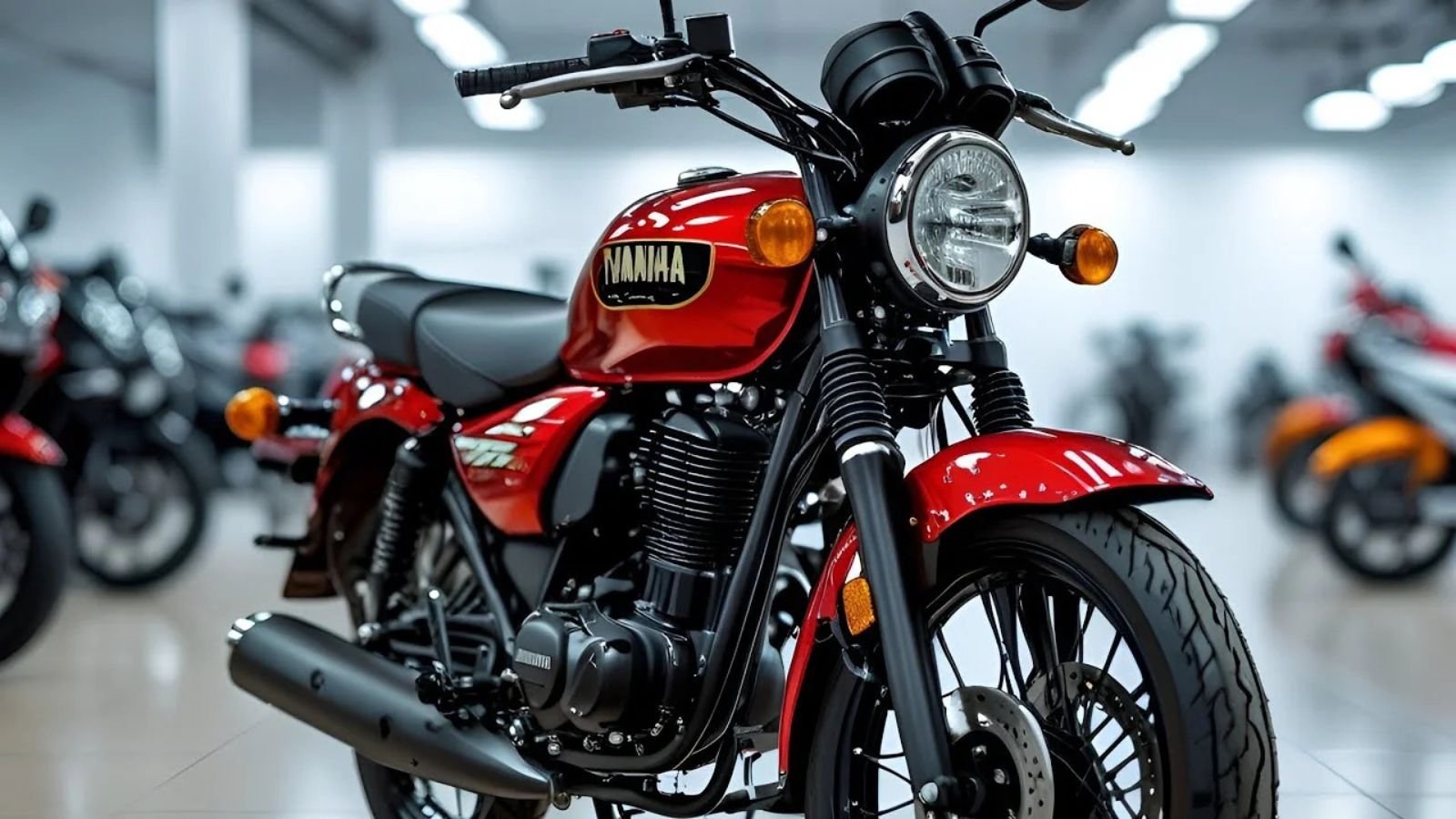The Yamaha RX100 isn’t just a motorcycle; it’s a living legend, a mechanical icon that continues to capture hearts decades after it disappeared from showrooms. It’s a name that evokes emotion, nostalgia, and awe among motorcycling enthusiasts across India. Introduced in the mid-1980s, the Yamaha RX100 changed the course of motorcycling history in the country. At a time when the market was flooded with slow, utilitarian two-wheelers, the RX100 arrived like a breath of fresh air—bold, fast, stylish, and thrilling to ride.
To many, it wasn’t just a means of commuting. It was an attitude. A rebellion. A statement on two wheels. Even today, the Yamaha RX100 commands immense respect among collectors and riders alike. From its lightweight body to its legendary exhaust note, this motorcycle carved out a unique identity that hasn’t been replicated since. In this in-depth look, let’s explore everything that makes the Yamaha RX100 one of the most iconic motorcycles India has ever seen.
Yamaha RX100: Technical Overview
| Feature | Details |
|---|---|
| Engine | 98cc, air-cooled, 2-stroke |
| Maximum Power | 11 HP (approximately) |
| Transmission | 4-speed manual |
| Weight | Roughly 100 kg |
| Top Speed | Around 100 km/h |
| Brakes | Drum brakes (front and rear) |
| Fuel Economy | 25–30 km/l (approx., tuning dependent) |
| Suspension | Telescopic forks (front), Swingarm (rear) |
| Production Span | 1985 – 1996 |
| Notability | Legendary performance, iconic sound |
Yamaha RX100: Revolutionizing Indian Roads
When the Yamaha RX100 made its debut in 1985, Indian riders were used to slow, fuel-efficient bikes primarily designed for commuting. What Yamaha did with the RX100 was completely unexpected—they introduced a compact 100cc bike that behaved like a performance machine. With an engine displacing just 98cc, the RX100 somehow managed to churn out close to 11 HP, giving it blistering acceleration that instantly made it a favorite among speed-hungry youth.
Its lightweight body, weighing only about 100 kg, made it remarkably agile. The power-to-weight ratio was unmatched at the time, making it ideal for zipping through urban traffic or blasting down open roads. The RX100 redefined how riders perceived motorcycles. For the first time, speed and agility came in a reliable, affordable, and well-engineered Japanese package.
Yamaha RX100: The Symphony of Sound
If there’s one element of the Yamaha RX100 that owners and fans remember with unwavering affection, it’s the exhaust note. The bike had an unmistakable two-stroke roar—sharp, raspy, and full of raw character. It wasn’t just noise; it was music to a biker’s ears. Whether it was idling in a narrow alley or screaming down a highway, the RX100 could always be identified by its distinctive sound.
This auditory signature came from the carefully tuned expansion chamber exhaust and the high-revving nature of its engine. The sound represented more than performance—it was emotion, identity, and a badge of honor. Hearing an RX100 even today is enough to turn heads and send shivers down the spine of old-school bikers.
Yamaha RX100: A Design That’s Forever Cool
Visually, the Yamaha RX100 was the embodiment of minimalistic charm. It had a small, rounded fuel tank, flat cushioned seat, chrome mudguards, spoked wheels, and round headlamp—all contributing to its no-nonsense aesthetic. Despite lacking the aerodynamic fairings or digital consoles seen in modern bikes, the RX100 looked tough, fast, and purposeful.
Yamaha’s decision to keep the bike simple only added to its visual appeal. The exposed engine and frame gave it a raw, muscular vibe. Bright colors and bold tank decals added youthful energy. Even today, restored RX100s parked next to modern motorcycles continue to attract more attention and admiration.
Yamaha RX100: The Ride That Made You Smile
Performance-wise, the Yamaha RX100 was a beast in a small package. The bike had a brisk throttle response, and the power delivery was instantaneous. Riders didn’t need to rev it too high to feel the punch—one twist of the wrist was enough to leap ahead of traffic. With its 4-speed gearbox, gear changes were smooth and precise, further enhancing the ride quality.
Whether on city roads or winding country lanes, the RX100 provided a level of thrill and connection that’s hard to find even in today’s advanced bikes. It was responsive, agile, and perfectly balanced. The suspension setup—telescopic forks up front and twin shock absorbers at the back—ensured a reasonably comfortable ride even on pothole-ridden roads.
The drum brakes were modest by today’s standards but worked effectively, especially given the bike’s light weight. It all came together to form a package that felt faster and more engaging than the sum of its parts.
Yamaha RX100: Built to Last
Durability was another hallmark of the Yamaha RX100. Its simple yet robust mechanical construction meant fewer parts that could go wrong. Even inexperienced mechanics could work on the RX100 with basic tools, making it a favorite in every corner of the country. Its engine, if maintained properly, could last for decades.
Spare parts were widely available during its heyday, and even today, a thriving market of aftermarket and refurbished components helps owners keep their RX100s in top shape. From the piston rings to clutch plates, everything is still relatively accessible if you know where to look. It’s not unusual to see a well-kept RX100 from the late ’80s still starting with a single kick and purring like a kitten.
Yamaha RX100: The Racer’s Weapon
The Yamaha RX100 wasn’t just a street bike; it found a second life on the racetrack. Enthusiasts across India took the RX100 to local drag races and hill climbs. Tuners worked their magic, increasing the engine capacity, adding expansion chambers, porting the cylinders, and changing the carburetors to transform the RX100 into a pocket rocket.
Thanks to its light weight and quick acceleration, it often outperformed bigger, more powerful bikes in short sprints. For a generation of racers, the RX100 was their first taste of motorsport glory. Even in professional circles, it earned respect for being a competent and reliable machine when tuned right.
Yamaha RX100: The Collector’s Trophy
With each passing year, the demand for a clean Yamaha RX100 keeps growing. Vintage collectors and nostalgic riders are constantly on the hunt for original models, especially those with matching chassis and engine numbers. A well-maintained or restored RX100 can easily fetch between ₹1 lakh to ₹2 lakh or even more depending on its originality and condition.
Restorers go to great lengths to find authentic paint schemes, badges, and OEM parts. Some even import original components to ensure that their RX100 remains faithful to the factory specifications. Owning a Yamaha RX100 today is not just a hobby—it’s a matter of pride and heritage.
Frequently Asked Questions About Yamaha RX100
Why was the Yamaha RX100 discontinued?
The bike was pulled from the market in 1996 primarily due to increasing pollution norms. Its two-stroke engine couldn’t meet the newer, stricter emission standards without major compromises, which led Yamaha to discontinue it.
Can you still buy the Yamaha RX100?
You can’t buy a brand-new RX100 from a showroom, but pre-owned models are readily available. Restored models are commonly listed online and at vintage bike auctions, though prices have steadily climbed over the years.
Is it still practical for daily use?
Yes, if maintained properly. However, it lacks modern conveniences like electric start, disc brakes, or fuel injection. It also has relatively low mileage and emits more smoke compared to today’s four-stroke engines.
Will Yamaha relaunch the RX100?
There have been rumors about Yamaha reviving the RX100 name with a modern, possibly four-stroke version. While official confirmations are pending, the legacy is strong enough that a comeback—if true—would generate immense buzz.
Yamaha RX100: A True Legend That Lives On
More than a machine, the Yamaha RX100 represents a movement. A time when motorcycles had soul, sound, and simplicity. It wasn’t perfect, but it was pure. No bike before or after it has managed to strike the same chord with Indian riders. From street corners to race tracks, from teenage dreams to grown-up collectibles, the RX100 has lived many lives—and each one legendary.
Even in the age of electric vehicles and high-tech machines, the legacy of the Yamaha RX100 endures. If you ever hear that unforgettable exhaust note echo through a quiet street, pause for a moment. You’re witnessing a piece of Indian motorcycling history, alive and well.
Some Important Link
| Telegram Group | Click Here |
| WhatsApp Group | Click Here |
| Home Page | Click Here |










